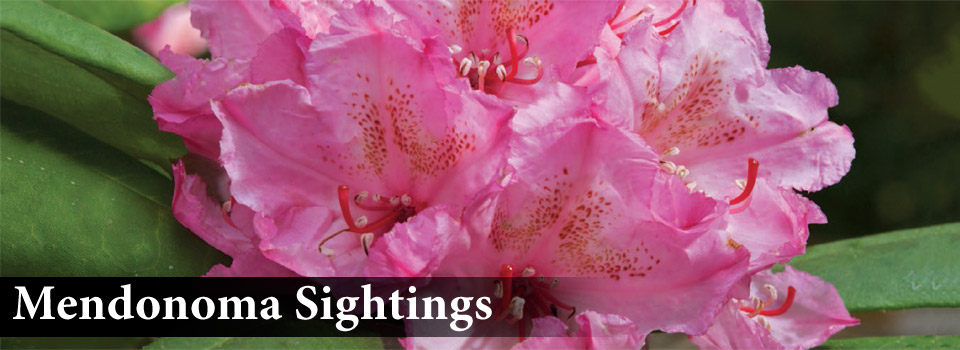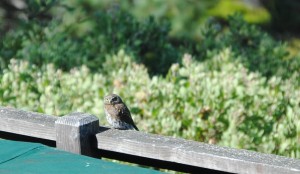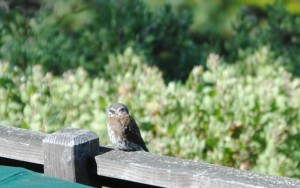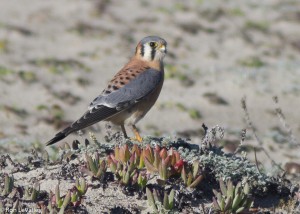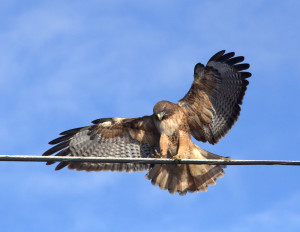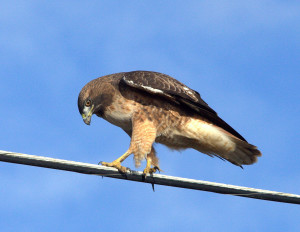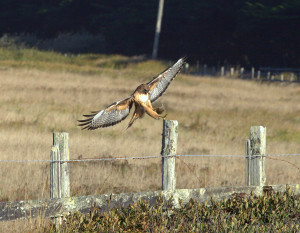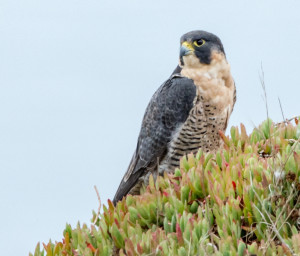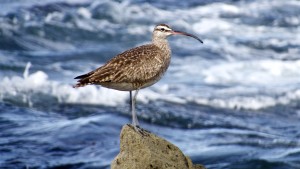Jayne Zeldin, the owner of ARFF Feed and Pet Supplies, heard this little owl hit a window. As it recovered outside her store, Jayne photographed it.
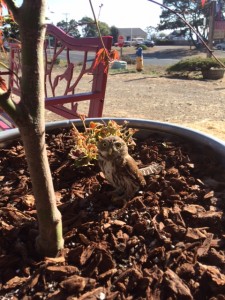 Jayne said is rested there for a while, and then flew off, so we hope it was uninjured. Northern Pygmy Owls are often seen in the daytime, as they hunt small birds. Rick and I had one perch near our birdfeeder one day. Here it is looking my way.
Jayne said is rested there for a while, and then flew off, so we hope it was uninjured. Northern Pygmy Owls are often seen in the daytime, as they hunt small birds. Rick and I had one perch near our birdfeeder one day. Here it is looking my way.
And then it turned its head, showing the false eye spots in the back.
To hear the "toot" of a Pygmy Owl, here is the link to the Cornell Lab of Ornithology: https://www.allaboutbirds.org/guide/Northern_Pygmy-Owl/sounds
Thanks to Jayne for allowing me to share her photo with you here.
